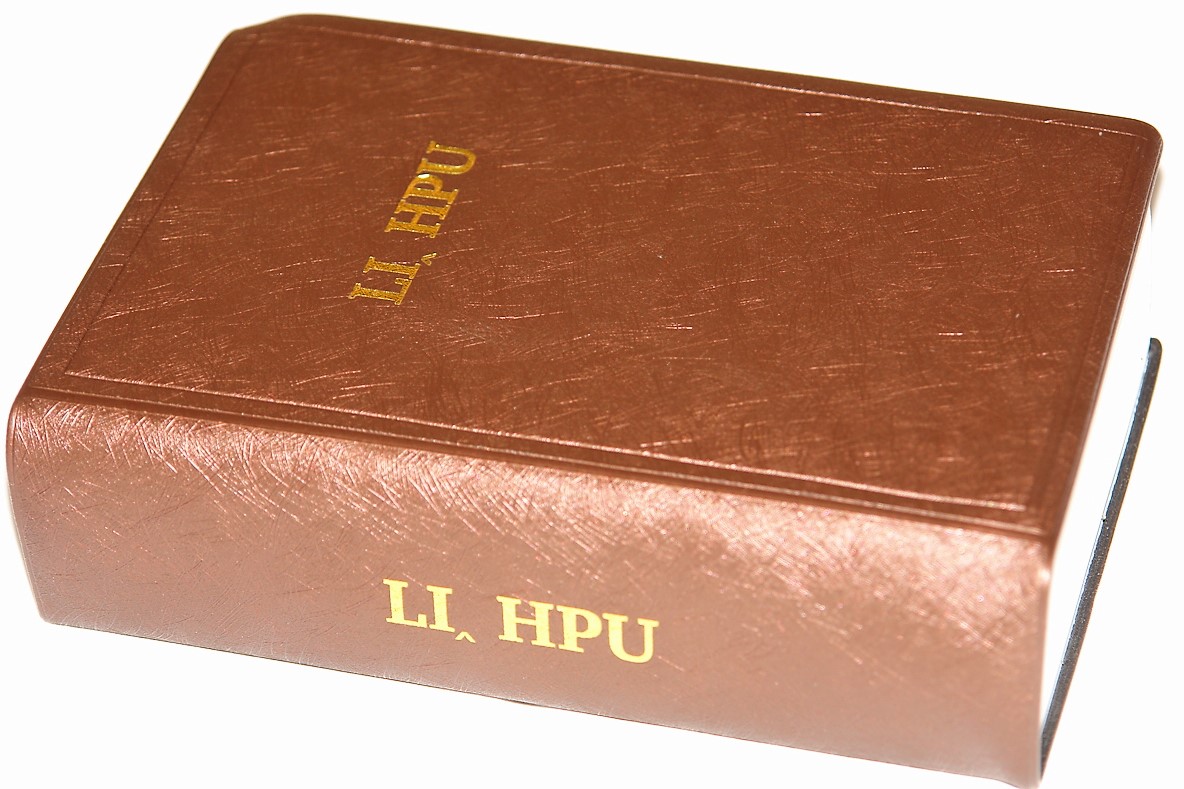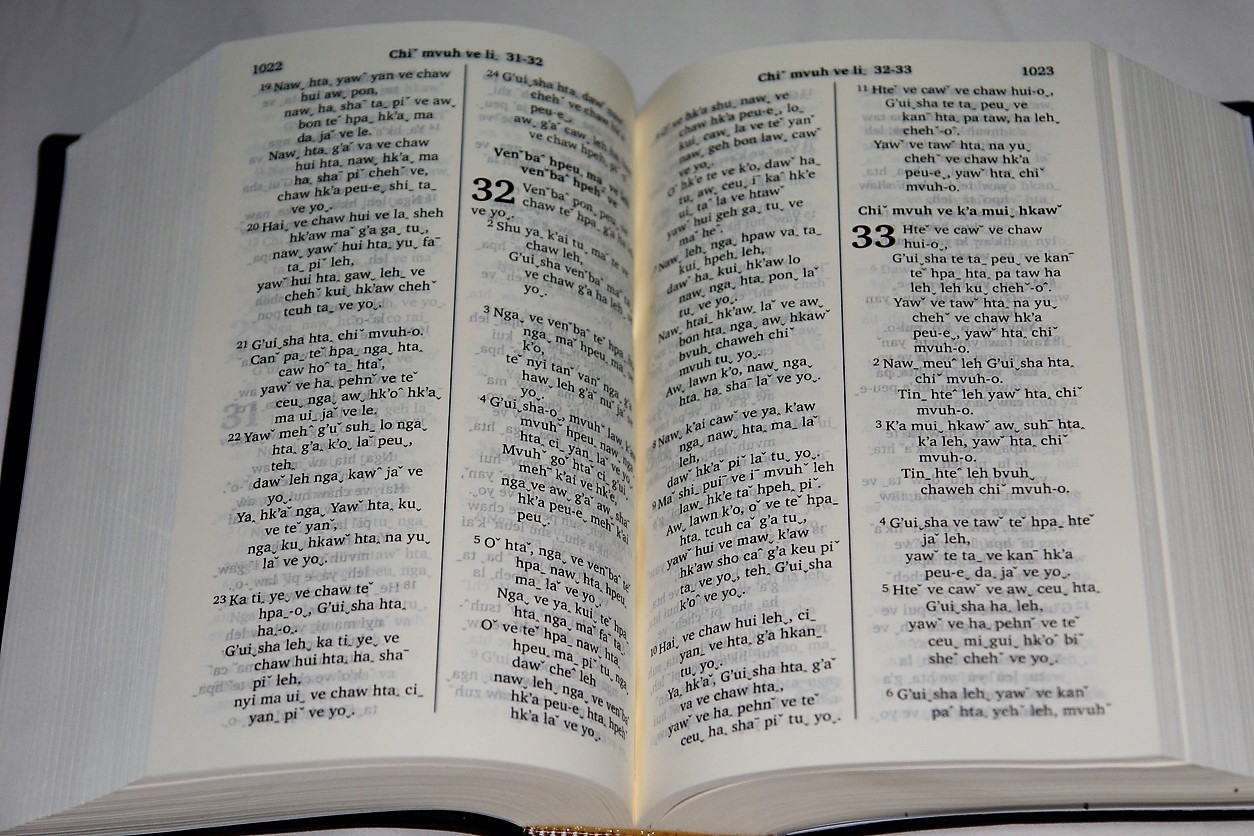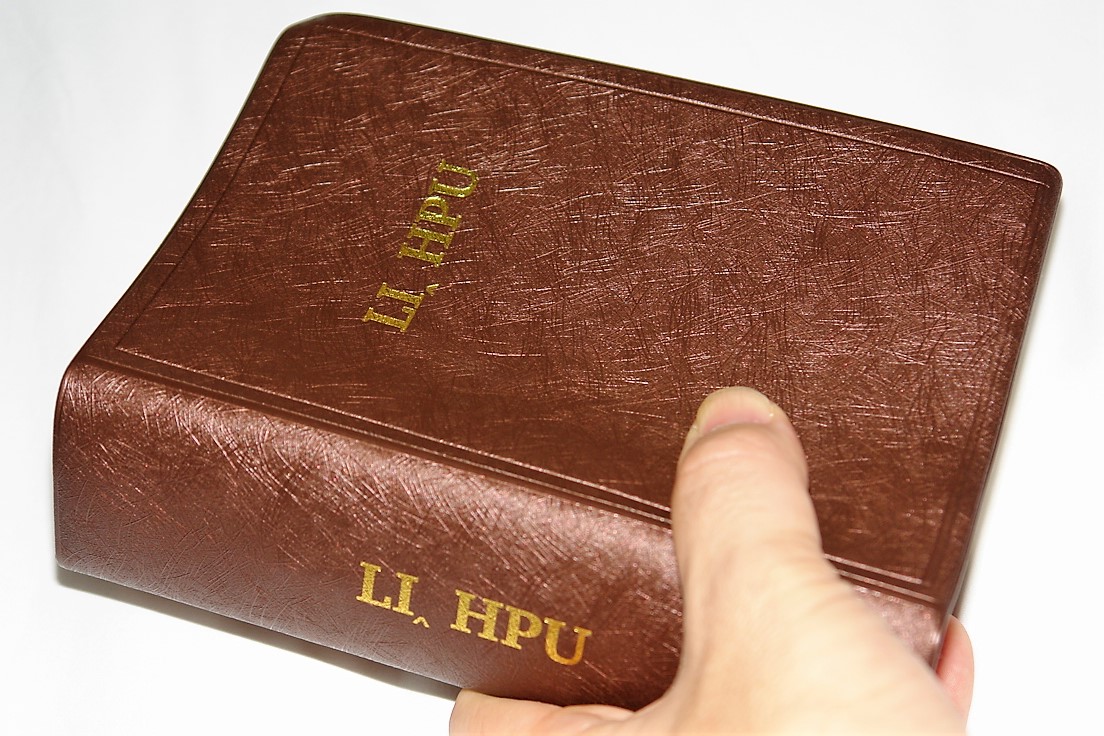Description
Lahu Bible (2010 Edition)
G'UI SHA VE LI‸ HPU
LAHU 52PL
Li‸ Hpu
Only 7,100 Copies Printed in 2010
ISBN: 9786167218144 / 978-6167218144
Language: Lahu
Binding: Vinyl Bound
Pages: 2390
Publisher: Bible Society (2010)
Condition: New
Overview
The 2010 edition of the Lahu Bible, printed by the Bible Society, is a significant publication for the Lahu-speaking community. This vinyl-bound Bible features the complete text in Lahu, a Tibeto-Burman language spoken by the Lahu people across China, Thailand, Myanmar, and Laos. With only 7,100 copies printed, this edition is a rare and valuable resource for both religious and linguistic scholars.
Product Features
- Binding: Vinyl Bound
- Pages: 2390
- Language: Lahu
- Publication Date: 2010
- Publisher: Bible Society
- Edition: Second Edition
Description
The Lahu Bible provides a comprehensive translation of Christian scriptures into Lahu, enhancing accessibility for the Lahu-speaking community. The Lahu language, which is spoken by approximately 1 million people worldwide, is a tonal language belonging to the Tibeto-Burman family. This edition is crucial for both the preservation of the language and the spiritual life of Lahu Christians.
John 3:13
Yoˇhanˬ li‸
16 Awˬ lawn kʼo, Gʼuiˬsha miˬguiˬ yaˇ hta‸ ha‸ jaˇ ve pa taw, yawˇ ve Yaˇ hpu tiˍ piˇ laˇ ve yoˬ. Hkʼe te leh, Yaˇ hpu hta‸ hkʼa yonˍ ve chaw hkʼa peu-eˬ maˇ gʼa luˬ maˇ gʼa sheˆ ve awˬ hkʼoˆ ka‸, co ti‸ ha ti‸ hta‸ gʼa ve yoˬ.
Genesis 1:1-5
Awˬ hkuiˉ puiˍ ve li‸
1 Awˬ hkuiˉ puiˍ htaˇ, Gʼuiˬsha miˬguiˬ leh mvuhˇ naw ma hta‸ te hpanˍ ve yoˬ. Miˬguiˬ chi lehˬ, te‸ chiˉ awˬ ho‸ awˬ han maˇ cawˬ leh gawˬ cu gawˬ pehˆ hpeh‸ ve yoˬ. 2Hkʼa peu-eˬ naˆ ho‸ lehˍ hpeh‸ leh, Gʼuiˬsha ve kanˇ paˆ lehˬ iˉ kaˆ teˇ hpaˍ awˬ hkʼoˆ cawˬ taˍ ve yoˬ. 3Oˇ htaˇ Gʼuiˬsha lehˬ, Awˬ gʼeuˆ tawˆ la piˇ-oˆ, teh‸ kʼoˆ hkʼa leh awˬ gʼeuˆ tawˆ la ve yoˬ. 4Gʼuiˬsha lehˬ, awˬ gʼeuˆ teˇ ceuˬ da‸ ve hta‸ gʼa mawˬ leh, awˬ gʼeuˆ leh naˆ ho‸ ve hta‸ pehˬ da‸ piˇ ve yoˬ. 5Awˬ gʼeuˆ hta‸ Yawˇ Mvuhˇ law‸ kʼaw, teh‸ meh piˇ leh, naˆ ho‸ ve hta‸ Mvuhˇ hpeu‸, teh‸ meh piˇ ve yoˬ. Mvuhˇ hpeu‸ la leh mvuhˇ teˇ pawˆ kʼaw‸ ba la ve yoˬ. Chi lehˬ, awˉ lawˉ peuˇ ve teˇ nyi hpeh‸ ve yoˬ.
Interesting Facts
- Lahu Language: Lahu is a Tibeto-Burman language with a Latin script writing system. It is spoken by the Lahu people in several countries across Mainland Southeast Asia.
- Lahu Population: There are approximately 600,000 native speakers of Lahu, with significant populations in China (Yunnan province), Thailand, Myanmar, Laos, and a diaspora in the United States.
- Historical Context: The Lahu people are one of the ethnic groups officially recognized by the People's Republic of China. They have historically faced challenges due to their remote locations and the changing political landscape of Southeast Asia.
Hashtags
#LahuBible #2010BibleEdition #LahuLanguage #BibleTranslation #TibetoBurmanLanguages #LahuCommunity #ChristianScriptures #RareBible


























































![Li Hpu: Lahu Bible [Hardcover] by Thailand Bible Society Li Hpu: Lahu Bible [Hardcover] by Thailand Bible Society](https://cdn11.bigcommerce.com/s-62bdpkt7pb/images/stencil/600x600/products/205/1130/1%2520%25281%2529__17608.1462823132.JPG?c=2)
![Li Hpu: Lahu Bible [Hardcover] by Thailand Bible Society Li Hpu: Lahu Bible [Hardcover] by Thailand Bible Society](https://cdn11.bigcommerce.com/s-62bdpkt7pb/images/stencil/600x600/products/205/1211/1%2520%25282%2529__95106.1462823134.JPG?c=2)











